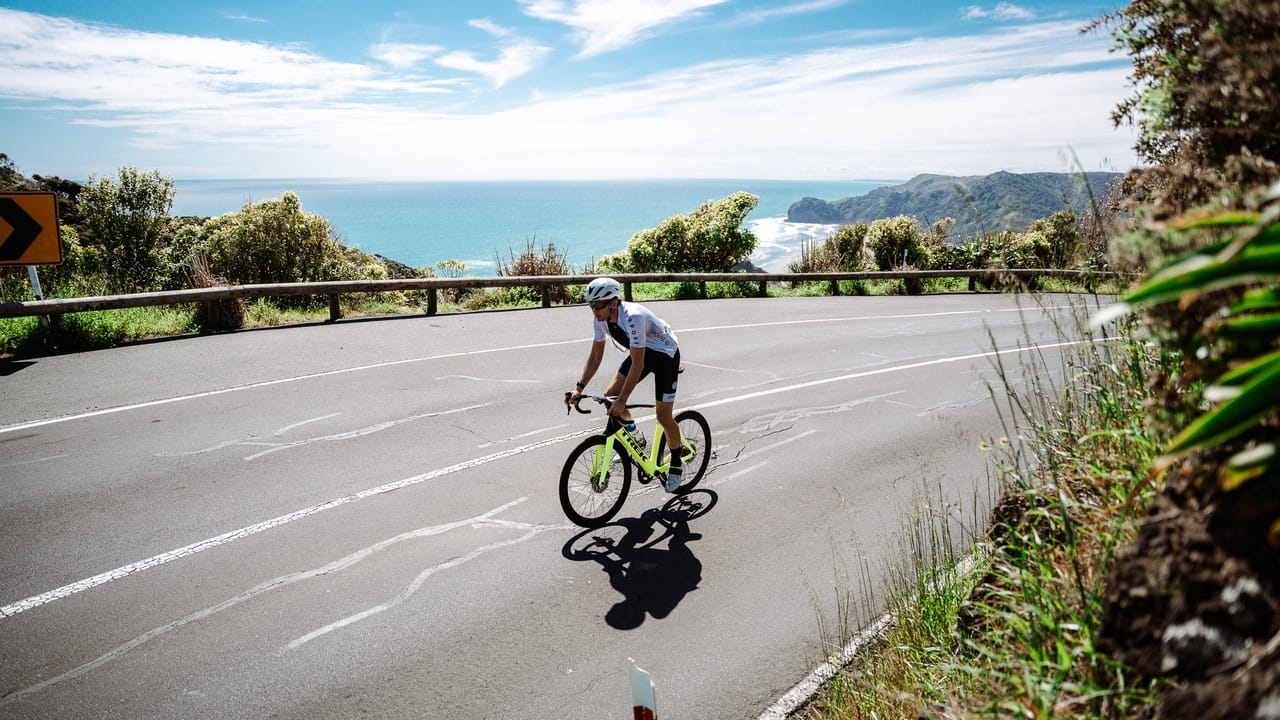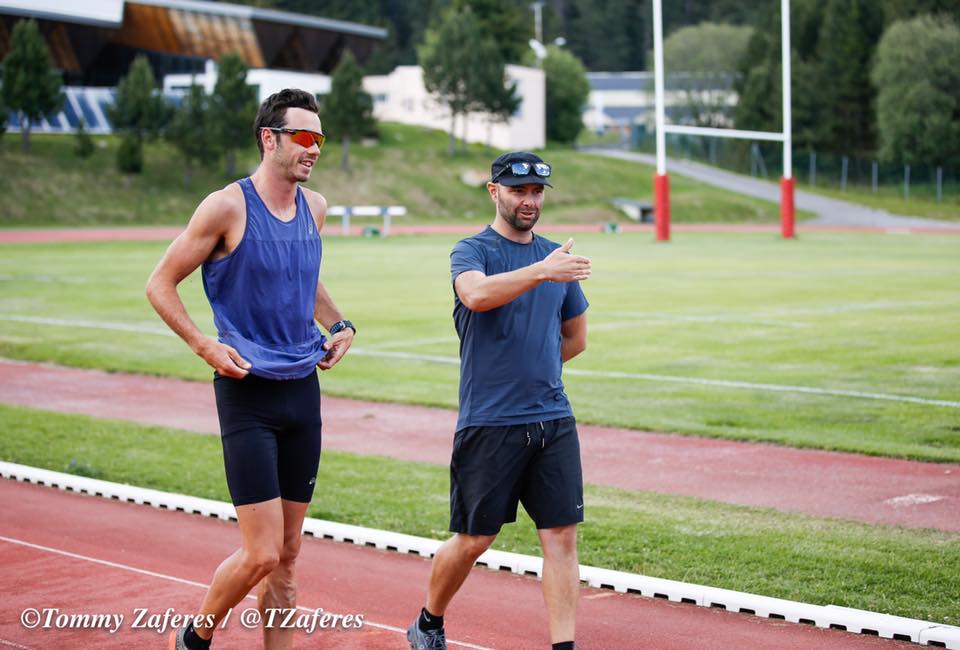As endurance athletes, we spend a lot of time talking about our ‘thresholds’; “what’s your FTP?” is as ubiquitous in endurance circles as “what’s your bench?” is in strength sport. FTP – or functional threshold power – is a metric gaining increasing footing in training programming and load monitoring in cycling and triathlon. Typically calculated as 95% of an athlete’s best-effort power over 20 min, FTP is used to estimate the second physiological ‘threshold’, which defines the transition from steady-state to non-steady-state physiological responses to exercise. That is, above this second threshold – commonly referred to as the “anaerobic threshold” – physiological variables such as oxygen consumption, circulating lactate concentrations, and muscle and blood acidity cannot stabilise, which means that fatigue inevitably and progressively develops.
Whilst knowledge of this second threshold is definitely of significance to endurance athletes, we argue that it is knowledge of the first physiological threshold – often referred to as the “aerobic threshold” or more accurately “lactate threshold” – that is of greater significance to long-distance triathletes. In this blog, we are going to briefly describe what this first threshold is, why it is useful, and how might go about identifying it at an individual level.
What is it?
The first threshold – which as mentioned is conveniently referred to as anything from the “aerobic threshold” or “lactate threshold” to LT1 or VT1 – defines the boundary between ‘moderate’ and ‘heavy’ exercise-intensity domains. Below this threshold, blood lactate concentrations are stable and essentially equal to baseline, whereas above it blood lactate concentration may stabilise, but at concentrations above baseline (4, 5, 8). It is this physiological definition that makes “lactate threshold” the most appropriate terminology. Similarly, when exercising at or below the lactate threshold, utilisation of rapid energy systems like the pyruvate-to-lactate pathway or phosphocreatine metabolism will be minimal, meaning that acidity is not meaningfully developed in the muscles and blood (4, 5, 8). Exercise below the lactate threshold is ‘conversational’ – or easy enough that it is possible to simultaneously hold a conversation without undue effort. Thus, exercise at and below this threshold can typically be sustained for multiple-hours in well-trained endurance athletes. Indeed, Ironman race-pace will typically be very close to this threshold. For instance, in the hot and humid conditions in Kona in 2018, Dan averaged ~260 W for the bike-leg, which was a little below his lactate threshold when measured in the laboratory in cool conditions.
Why is knowledge of this threshold important?
The lactate threshold is critical in endurance sport as it defines the upper limit for moderate-intensity training sessions designed to result in minimal physiological stress and allow rapid recovery (11, 13, 15). Indeed, in well-trained athletes, the lactate threshold appears to delineate the intensity below which post-exercise autonomic disturbance – measured through HRV – is minimal (12). When training above the lactate threshold, disturbances in autonomic balance are more likely, and the fatigue and recovery time required following training is increased. Thus, when training below the lactate threshold is accurately programmed and emphasised in the training plan, larger overall training volumes can be attained. That is why many elite endurance athletes adhere to what is called a pyramidal or polarised training intensity distribution, with upwards of ~75-80% of total training time accumulated at intensities below the lactate threshold (13, 14). That is not to say that all of our training should take place below the lactate threshold; just that we want to be very specific about when and how we go above it, such that stress, recovery, and adaptation can be managed successfully.
How do we identify it?
That is the big question we have to grapple with. Ideally, the best approach for identifying your lactate threshold is to go into a laboratory and get it tested. This will involve exercising at progressively increasing workloads, with heart rate and blood lactate concentration – typically from a fingertip or earlobe – measured in each stage. This allows the exercise physiologist to construct a workload vs. lactate curve, and therefore report back your lactate threshold power or speed and heart rate. Knowledge of your lactate threshold heart rate might also be really important when trying to regulate your training intensity such that it remains easy 2, 3, or 4 hours into a session (it is quite possible your lactate threshold power will decline after multiple hours of exercise – a series of recent studies showed this is the case for the second threshold (1–3)).
Now, we appreciate that not everyone has frequent or affordable access to laboratory testing. That begs the question; can I estimate this threshold myself? Phil Maffetone has proposed the ‘MAF’ estimate of lactate threshold heart rate (180 minus age in years, with some adjustment for training status) (7), although the accuracy of this method has not been tested empirically, and the possibility of meaningful error at an individual-level can’t be overlooked. Legendary physiologist Martti Karvonen also tried to estimate the heart rates that should be used for different training intensities as far back as 1957 (6), with his ‘Karvonen formula’ using percentages of the heart rate reserve (maximum minus resting rates). Specifically, ~40-60% of heart rate reserve has been referred to as ‘moderate-intensity’, though this is not anchored to other physiological responses. So, for example, if an individual had a maximum heart rate of 185 bpm and a resting heart rate of 40 bpm, we would calculate an HRR (185-40) of 145 bpm. The Karvonen formula suggests taking 40-60% of this number and then adding back on your resting heart rate. E.g., 60% of 145 bpm = 87 bpm; 87 bpm + 40 RHR = 127 bpm. This is would be the suggested upper end of moderate-intensity exercise. Indeed, in our experience having tested numerous athletes in the laboratory using metabolic and lactate data, this number appears much lower than an expected aerobic threshold in athletes.
Therefore, we wish to promote an individualised approach here, given the inter-individual variation we see in laboratory-estimated lactate threshold heart rates in athletes of similar age and training status, and even heart rate reserve values. We’d first like to mention a recently-investigated method that uses changes in heart rate variability during exercise to estimate the lactate threshold (10). Whilst this method holds a lot of promise, the study investigating this method used three-lead ECG measurements, which are generally not accessible outside of a laboratory setting. Follow-up studies will tell us if this method works when using chest-strap-derived ECG measurements. Stay tuned!
One ready-to-use method that has seen some attention in the literature relates back to my point about exercise below the lactate threshold being ‘conversational’ in nature. The “Talk Test” is a method by which the lactate threshold is identified as the workload at which an athlete can no longer comfortably talk. The effectiveness of this test for identifying the lactate threshold power and heart rate was examined in a cohort of 18 well-trained cyclists back in 2013 (9). In this study, the cyclists performed an incremental test in the laboratory to estimate the lactate threshold on two occasions: once with physiological measures, and once with a talk test. In the latter test, participants were asked to read a standardised paragraph (38 words) aloud at the end of each stage, with the lactate threshold identified when the participants could not talk comfortably. There were no significant, systematic differences between lactate threshold power or heart rate estimates using the physiological data or the talk test, with strong correlations observed between the two measures, and relatively tight limits of agreement. Therefore, this test could easily be done at home and may provide a useful means of estimating the all-important lactate threshold.
Have a go
Why not have a go at this at home? If you fancy it, here are some instructions you could follow for a cycling-based test:
- Choose a 30-40 word paragraph you are familiar with (e.g. words to your national anthem or from your favourite poem)
- Put on your heart rate monitor
- After a 10-min warm-up, start the test at a power output that is very easy (perhaps ~40-50% of FTP)
- Increase your power output by 20 W every 4 minutes (you could either programme this using ergometer mode or just do it manually!)
- Read the passage aloud during the last 30 seconds of each stage
- Stop the test when you can no longer comfortably read the passage aloud (i.e. you have to breathe heavily after every few words)
- Use the power output of the last stage that you could read comfortably in as your lactate threshold power estimate, and take the heart rate from 3:00-3:30 of that stage as your lactate threshold heart rate estimate (reading the passage may interfere with your heart rate, so don’t use the last 30-seconds whilst you were reading!)
References
- Clark IE, Vanhatalo A, Bailey SJ, Wylie LJ, Kirby BS, Wilkins BW, Jones AM. Effects of two hours of heavy-intensity exercise on the power–duration relationship. Med Sci Sports Exerc 50: 1658–1668, 2018.
- Clark IE, Vanhatalo A, Thompson C, Joseph C, Black MI, Blackwell JR, Wylie LJ, Tan R, Bailey SJ, Wilkins BW, Kirby BS, Jones AM. Dynamics of the power-duration relationship during prolonged endurance exercise and influence of carbohydrate ingestion. J Appl Physiol 127: 726–736, 2019.
- Clark IE, Vanhatalo A, Thompson C, Wylie LJ, Bailey SJ, Kirby BS, Wilkins BW, Jones AM. Changes in the power-duration relationship following prolonged exercise: estimation using conventional and all-out protocols and relationship with muscle glycogen. Am J Physiol – Regul Integr Comp Physiol 317: R59–R67, 2019.
- Jones AM, Vanhatalo A. The ‘critical power’ concept: Applications to sports performance with a focus on intermittent high-intensity exercise. Sports Med 47: 65–78, 2017.
- Jones AM, Wilkerson DP, DiMenna F, Fulford J, Poole DC. Muscle metabolic responses to exercise above and below the “critical power” assessed using 31P-MRS. Am J Physiol – Regul Integr Comp Physiol 294: R585–R593, 2008.
- Karvonen MJ, Kentala E, Mustala O. The effects of training on heart rate; a longitudinal study. Ann Med Exp Biol Fenn 35: 307–315, 1957.
- Maffetone P, Laursen PB. Maximum aerobic function: Clinical relevance, physiological underpinnings, and practical application. Front Physiol 11: 296, 2020.
- Poole DC, Ward SA, Gardner GW, Whipp BJ. Metabolic and respiratory profile of the upper limit for prolonged exercise in man. Ergonomics 31: 1265–1279, 1988.
- Rodríguez-Marroyo JA, Villa JG, García-López J, Foster C. Relationship between the talk test and ventilatory thresholds in well-trained cyclists. J Strength Cond Res 27: 1942–1949, 2013.
- Rogers B, Giles D, Draper N, Hoos O, Gronwald T. A new detection method defining the aerobic threshold for endurance exercise and training prescription based on fractal correlation properties of heart rate variability. Front Physiol 11: 596567, 2021.
- Seiler KS, Kjerland GØ. Quantifying training intensity distribution in elite endurance athletes: Is there evidence for an “optimal” distribution? Scand J Med Sci Sport 16: 49–56, 2006.
- Seiler S, Haugen O, Kuffel E. Autonomic recovery after exercise in trained athletes: Intensity and duration effects. Med Sci Sports Exerc 39: 1366–1373, 2007.
- Seiler S, Tønnessen E. Intervals, thresholds, and long slow distance: The role of intensity and duration in endurance training. Sportscience 13: 32–53, 2009.
- Stöggl T, Sperlich B. Polarized training has greater impact on key endurance variables than threshold, high intensity, or high volume training. Front Physiol 5: 1–9, 2014.
- Sylta Ø, Tonnessen E, Seiler S. From heart-rate data to training quantification: A comparison of 3 methods of training-intensity analysis. Int J Sports Physiol Perform 9: 100–107, 2014.








